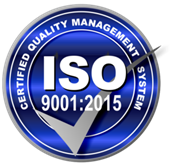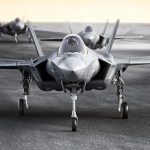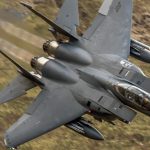
The F-35’s Advancement and Importance of EMI Shielding
The F-35 is currently the most advanced fighter jet in the world. Its performance, advanced avionics, speed, and flight ceiling are peerless and give the US military and coalition forces an asymmetrical advantage.
While the F-35 is currently king of the skies, continued advancement across all domains of technology is needed to ensure airspace superiority. Payload, speed, maneuverability, and communications are all crucial elements that make the F-35 such a successful aircraft. However, the attention to detail and advanced communications, and stealth capabilities are what really make this aircraft truly superior. Among these elements is EMI shielding.
What Is EMI Shielding?
Electro-magnetic interference is a crucial factor to consider during the engineering process of any aircraft. Most commercial flights still make the same overtures to turning off “cellular devices or placing them in airplane mode.” Then, almost every single passenger, with a united heart and mind, continues using their cell phones. In the early days of cell phone technology, the warnings were much more in earnest, and obedience was much more ubiquitous. This was because the low-frequency electromagnetism emitted by older cell phones caused much more interference with avionics than do our modern high-frequency cell phones today. An alternative response to passenger usage of cellular phones would have been to use EMI shielding. However, this would represent an increased cost for airlines, so the cheaper route of passenger compliance was pursued.
Uses of EMI Shielding in Defense and Commercial Aviation
EMI shielding is most often used in both defense and commercial aviation to protect onboard avionics from other components that transmit and receive signals. In commercial aviation, EMI shields are often used around Wi-Fi routers to avoid interference with the avionics in the cockpit. Other than this and a few other applications, EMI shielding within commercial aviation is sparse.
Defense aircraft, on the other hand, are more robust since their operating environment is much more hostile. Aircraft like the F-35 can suffer from a number of natural and artificial EMI and, therefore, must take greater precautions than commercial aircraft. Nearly all military aircraft are brimming with sensors, transmitters, receivers, lasers, GPS, and other components that commercial aircraft use to a lesser degree. The advent of UAVs and UCAVs has brought onboard even more complex and crucial technologies, most of which emit electromagnetic waves.
Protecting Electronics from EMI
One of the most common ways to isolate EMI is through the use of copper and nickel plating. Copper and nickel both have high conductivity and low inductance which make them ideal for isolating electronics from EMI. When applied to an electronics enclosure, nickel and copper are both able to effectively neutralize EMI and prevent it from escaping and entering other electronics enclosures. Additionally, nickel and copper both provide resistance to corrosion and other damage. Finally, other metals such as tin, silver, and gold can also be used for EMI shielding. However the combination of copper and nickel is a tried-and-true cost-effective solution for EMI shielding.
Conclusion
Whether it’s A&D, medical devices, EVs, and more, you can count on SAT Plating to deliver controlled and repeatable technical solutions for your EMI shielding requirements. We are 100% focused on reducing and identifying risk while surpassing the requirements for your product and exceeding your expectations. Talk to a plating specialist and see what SAT Plating can do for your business.
SAT Plating is ITAR Registered & Compliant as well as ISO 9001:2015 Certified.






